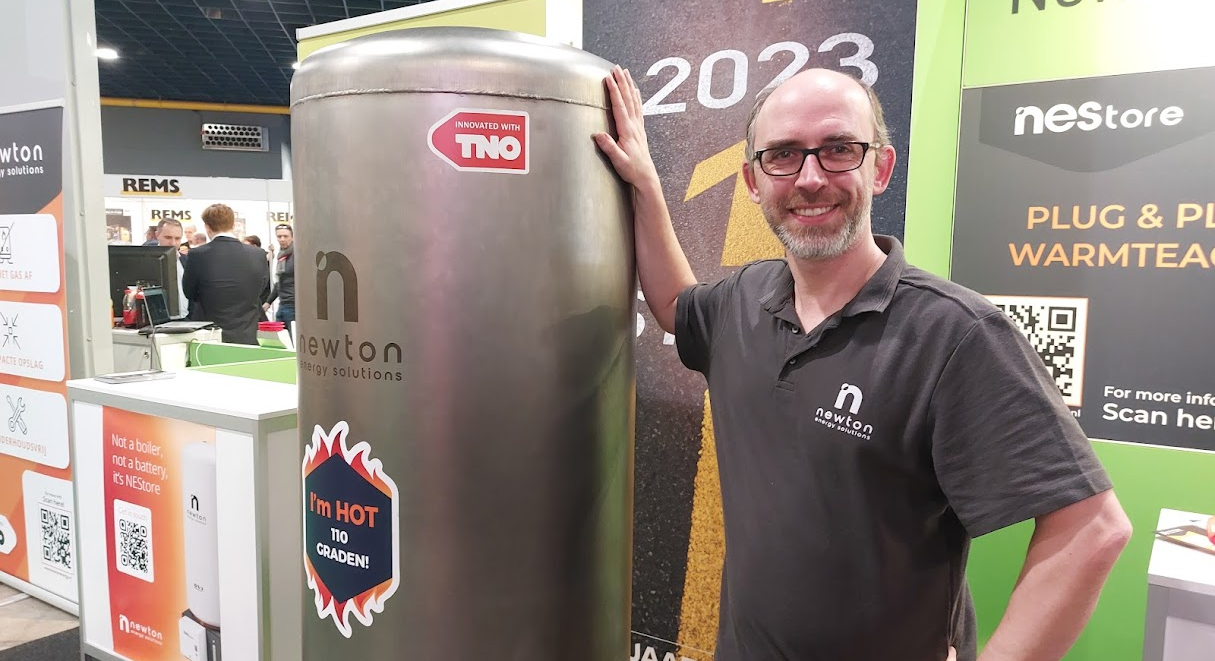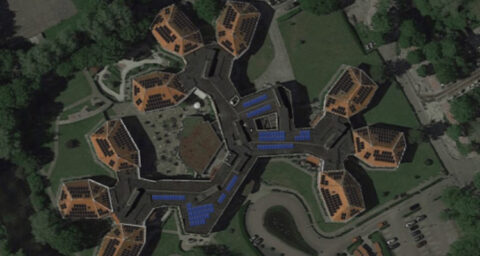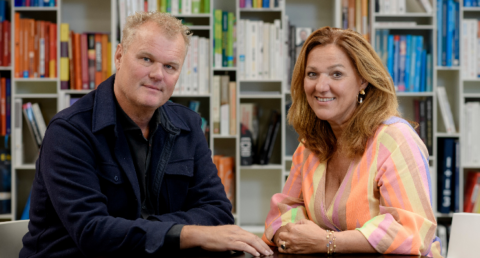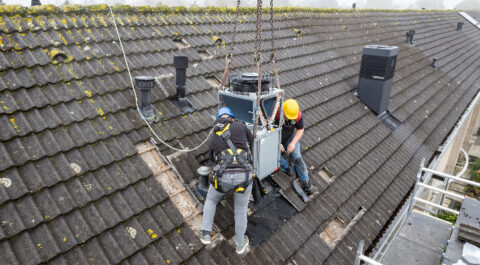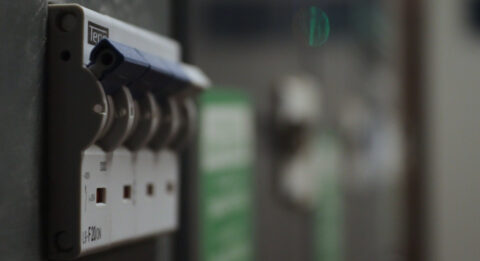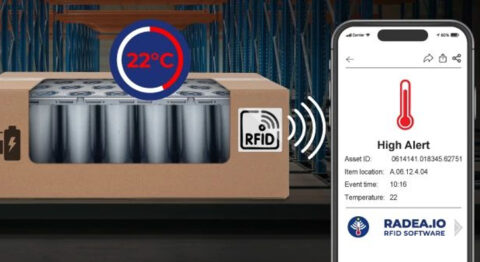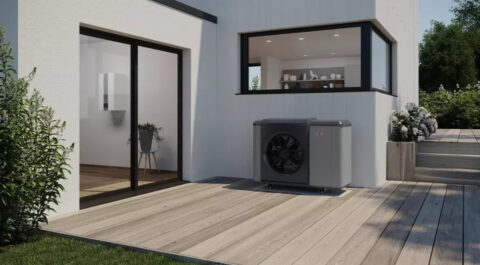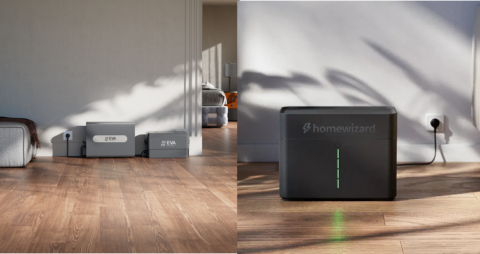From the outside it just looks like a buffer tank, but it's a smart heat buffer: the NEStore from Newton Energy Solutions. With excess electricity from your solar panels or from the cheap hours of the grid, you use it to store energy in the form of heat. So you can use it later for tap water or heating. The specs are amazing due to some very simple cleverness.
Newton Energy Solutions' mission is to make energy storage possible for everyone, says an enthusiastic Pavol Bodis at their booth at VSK. He is one of the founders who developed the concept of the NEStore at TNO. That this storage is needed is clear, he thinks. Because of grid congestion and because the net-metering scheme is unfair for people who can't afford solar panels. They pay for people like himself who have 10 panels on their roofs.
Affordable and sustainable energy storage
Three forms of energy storage are currently possible, Pavol teaches. The first is hydrogen. But that has a COP of 0.25. First you have to make it, which already costs you 40 percent of the energy, and then you have to put it back, which also costs another 40 percent. That's of little use to you as a household, so you're left with energy storage in electrons and heat.
Storage in electrons - that is, in batteries - has an excellent COP of 0.95 (for storage, COP 1 is obviously the highest possible). However, making batteries requires all kinds of scarce and environmentally unfriendly metals, such as cobalt and lithium. A battery also 'only' lasts 15 years and after that you have to dispose of everything very carefully. 'So batteries are not sustainable.'
In return, Pavol suggests storage in heat. We use only steel and water, which is all easily reusable. Moreover, the NEStore will last at least 30 years because it has no moving parts. You might have to replace the pump once or repair the insulating vacuum, but that's about it. 'And we also have a COP of 0.95, the same as the battery. Moreover, a 30 kWh battery costs 15000 euros and our solution costs 6000 euros, the smaller variant even 5000 euros. So a battery is not affordable, while the NEStore is.'
Simple physics principles
But what are the simple principles that make the NEStore so efficient that Pavol dares to put a COP of 0.95 on it? There is a heat loss of 1 degree per day, he states. First of all, the tank is very well insulated. There are two walls of steel and between them is a vacuum, so hardly any heat gets through. But it is also because hot and colder water are not mixed together.
The latter drives the physical principle of stratification, the stratification of hot and cold areas. Hot water is lighter than cold water, so the hot water stays at the top of the tank. Water is heated to 110 degrees. If electricity is low, the flow of water is slower than if electricity is high. Then that hot water goes all the way up through a tube in the tank. This way there is no circulation in the tank and so the hot water stays upstairs. There is a sharp separation between 110-degree water at the top of the tank and 20-degree water at the bottom of the tank. That separation rises higher as the supply of hot water decreases, but moves downward as more heat is stored.
Closed system
Obviously, that heating is controlled with smart software. The usage pattern is taken into account, and if energy from the grid is cheap or even a negative price, that electricity is utilized. That's how you utilize more green energy. "Most people use 30 percent green energy, I'm at 85 percent green energy.
The NEStore is a closed system, so the water from the tank is not used as tap water. It is used to heat the tap water. You can also connect it to heating, but not both at the moment. 'We're working on that, but right now it's still either/or.' With a full tank you can shower for two hours. 'You need a lot of adolescents to empty that quickly,' laughs Pavol, who has adolescent daughters of his own.
